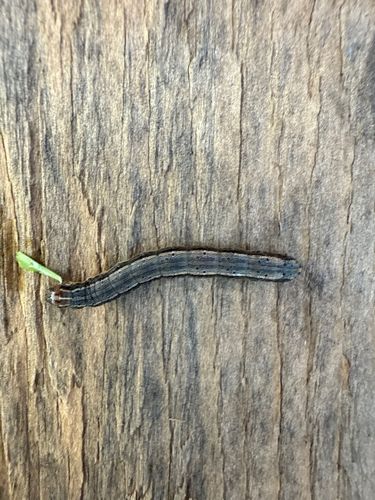Armyworm (likely true armyworm or a similar species)
Scientific Name: Varied, depending on the exact species, but common ones include Pseudaletia unipuncta (true armyworm) or other species within the Spodoptera genus.
Order & Family: Lepidoptera (Order), Noctuidae (Family)
Size: Larvae (caterpillars) typically range from 2.5 to 4 cm (1 to 1.5 inches) in length when fully grown.

Natural Habitat
Typically found in agricultural fields, pastures, lawns, and gardens. They prefer areas with dense vegetation, particularly grasses and broadleaf plants.
Diet & Feeding
Broadleaf weeds, various grasses, forage crops (e.g., alfalfa, clover), and cereal crops (e.g., corn, wheat, oats, barley, rice). They are primarily herbivores and significant agricultural pests.
Behavior Patterns
Armyworms are active primarily at night, feeding on plants. During the day, they often hide at the base of plants or in soil cracks. They are known for their 'army-like' march from one feeding area to another once a food source is depleted.
Risks & Benefits
Potential Risks: Armyworms are major agricultural pests, capable of causing significant damage to various crops, including corn, wheat, and rice. Large infestations can lead to complete defoliation and substantial economic losses for farmers. Potential Benefits: In their adult moth stage, they can act as pollinators to some extent, though their larval stage's destructive feeding habits far outweigh this benefit in terms of human interaction.
Identified on: 8/11/2025